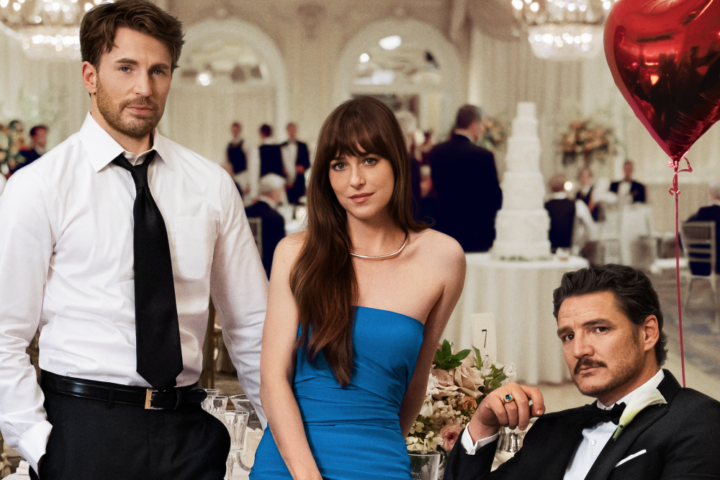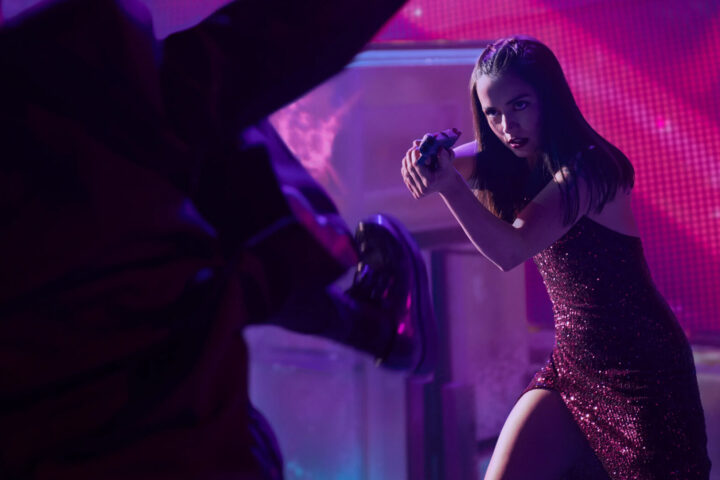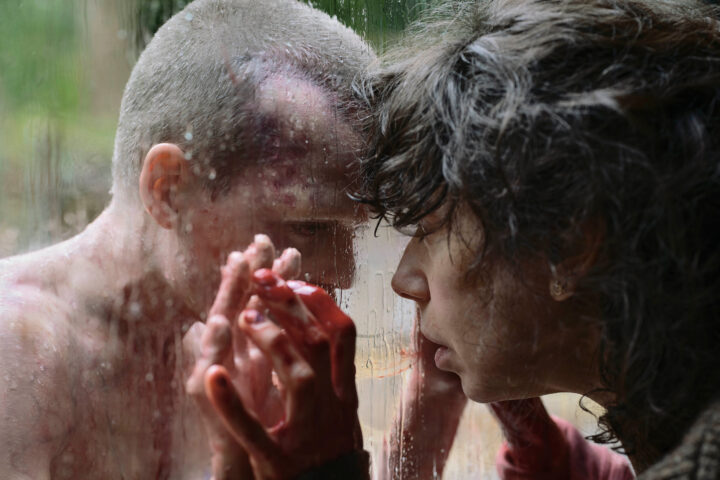Pablo Larraín’s Maria is foremost a vehicle for Angelina Jolie, bringing vocal precision and quietly regal vulnerability to her portrait of legendary mezzo-soprano Maria Callas. A meditation on artistry and decline as Callas drifts through her final days in a haze of memory, the film is impeccably crafted but often distant, relying heavily on Jolie’s nuanced portrait as its emotional anchor.
Larraín has explored this territory twice before: Jackie, where Natalie Portman stepped into Jackie Kennedy’s post-assassination turmoil, and the conceptually strained Spencer, featuring Kristen Stewart as a beleaguered Princess Diana. Neither film fully succeeded. Maria, perhaps the strongest of the three, completes Larraín’s trilogy of tragic historic icons. As with both prior pictures, Larraín deploys impeccable tech credits—the film is drop-dead gorgeous to look at and listen to—in tribute to his ailing Callas, depicted in 1977 Paris drifting through personal reflections, and many pills, in her sprawling apartment at 36 Avenue George Mendel. It’s here that she muses on a potential comeback while an imaginary film crew (led by The Power of the Dog’s Kodi Smit-McPhee) chronicles her last days.
While Larraín’s direction is too structurally ambitious to be a straightforward hagiography, Steven Knight’s screenplay doesn’t quite sustain consistent dramatic weight. Maria occasionally feels slight, but nonetheless works largely due to Jolie’s impressive balancing act between Callas’s public grandeur and private fragility, even if the movie around her falls a bit short of fully engaging as a biographical drama.
In Larrain’s opening shot, famed American-born Greek master Callas lies dead of a heart attack at age 53, discovered by enduringly faithful servants Bruna (Alba Rohrwacher) and Ferrucio (Pierfrancesco Favino). Flash back to a week prior and we find “La Callas” in an artistic crisis—she wants to sing again (it’s been years), but is her voice up to it? The short answer is no, but Jolie, who according to Larraín impressively did “60-70 percent” of her own singing for the role, gives the flailing diva her all (and occasionally gets an assist from archived Callas recordings, digitally combined with her own voice).

In the film’s best moments, Maria recalls formative rendezvous with John F. Kennedy (Caspar Phillipson) and her complicated love affair with Aristotle Onassis (Haluk Bilginer), presented here as tortured soulmates given the untimely interjection of wife to-be Jackie Kennedy. The film’s richest dramatic scene comes on Onassis’ hospital deathbed. And in a fine cameo set during a brief restaurant reunion, Valeria Golino turns up as Maria’s sister, advising her to leave her troubled past behind and to “close the door, little sister.” But troubles would not leave, and Callas here spirals into an addiction to pentobarbital and Mandrax (methaqualone). In real life it’s said that she was introduced to these pills by Onassis, which the movie sidesteps; a pretty big omission given they contributed significantly to her death.
Such moments (and childhood flashbacks suggesting abuse) keep us engaged in a languorous narrative that sometimes feels like Larraín’s reverence for his subject might keep Callas under glass, and the film frequently leans on Ed Lachman’s luminous cinematography and the exquisite production design—both captivating but not a substitute for drama. Throughout, Larraín resists sentiment, with a few exceptions between Callas and her devoted staff. In one especially gentle exchange, the ailing soprano suggests Bruna and Farruggio remain together after her death: “You’re both good people.” And early in the film Callas performs Norma’s “Casta Diva” (one of many musical interludes) in her kitchen for Bruna, while Larraín shuttles back in time to reveal peak Callas in her glory, performing the same number for a rapt audience; the juxtaposition is heartbreaking.
Lachman’s visual palette wraps Paris in a melancholic glow that feels appropriately elegiac. The similarly radiant Jolie delivers a performance of extraordinary technical skill. Her dual role in the film—bringing Maria Callas to vivid life while reasserting her own standing as a singular (and Oscar-winning) performer able to convey both larger than life public glamour and the ache of private vulnerability—mesmerizes. She is perfectly cast. Her Callas is a study in contradictions: an iconic artist ravaged by inner turmoil, projecting flawless beauty while her talent crumbles beneath the “La Callas” mystique. As we watch her step onto an empty theater rehearsal stage in search of redemption, Jolie transcends impersonation, showing us both movie star and opera diva, each woman of her own particular sophistication and pathos. As a film, Maria strikes a tone that feels at times detached and slightly self-possessed, a posture befitting the world’s greatest opera diva.
Recommended.
3 stars
Nov. 27 theatrical; Dec. 11 Netflix.



